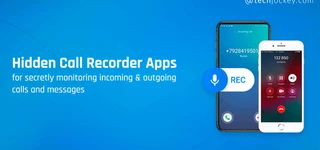How Phishing Simulation Tools Trains Your Team to Fight Cyberattacks?

Did you ever think about how a single phishing email could cost your company thousands or even millions?
And more importantly, do your employees know how to spot a fake login page or a suspicious attachment?
These aren’t just hypothetical questions. They highlight one of the most common and costly cybersecurity risks today.
Phishing remains one of the most dangerous cyber threats today. In fact, over 90% of cyberattacks start with a phishing email. It’s not just big corporations that get targeted. Small and mid-sized businesses are vulnerable, sometimes even more.
The scary part? Most phishing emails look shockingly real. All it takes is one click.
Training employees alone isn’t enough. That’s where phishing simulation software steps in.
This tool mimics real phishing attacks without the risk. It helps companies test their teams in a controlled, safe environment.

In this blog, you will learn what phishing simulation tools are, how they work, and why every business should be using them.
Let’s get started.
What is a Phishing Simulation Tool?
A phishing simulation tool is a critical type of cybersecurity software that sends realistic but harmless phishing emails to your employees. What’s the goal behind this? To test how they react. Will they click the link? Enter their credentials? Or report it?
It’s helpful to train employees before real hackers do.
These tools mimic common phishing techniques, such as fake invoices, suspicious file attachments, password reset requests, and even messages that look like they are from the CEO.
Here’s an example of a phishing email by a CEO:

There are chances that some people might reply to these types of messages. Therefore, the software tracks who clicked, who replied, and who flagged the email. You get a full report. You see where the weak spots are.
And when used regularly, it helps build a stronger and more alert team.
How Does Phishing Simulation Tools Work?

It starts with a simple setup:
- Choose a campaign.
- Pick a phishing template.
- Hit send.
The phishing simulator then sends fake phishing emails to your team. These emails are created in such a way that they look real. Some might look like messages from Microsoft. Others might copy a Dropbox or Amazon notification.
When employees interact with these emails, whether by clicking, replying, or opening links, the software tracks their actions.
It highlights risky behaviors. Some tools even score each employee’s phishing awareness.
You can then use this data to assign training, like short videos, tips, quizzes, or personalized learning based on mistakes.
Over time, as more tests are run, click rates drop, and the team gets better. With more awareness, real attacks become easier to spot.
Why You Need Phishing Simulation Software?

If you still rely on yearly security training, that’s not enough.
Cybercriminals are getting smarter, and their emails are harder to detect. On the other hand, your team is too busy to double-check every email.
That’s a problem!

According to Verizon’s Data Breach Report, 1 in 3 employees will click on a phishing link. Even worse, 1 in 8 will enter their credentials.
Phishing simulation software helps stop that before it happens. It gives your team hands-on experience – a realistic practice.
Here’s what you gain:
- Spot vulnerabilities fast – Find out who needs more training.
- Reduce your risk – The more simulations you run, the sharper your team becomes.
- Meet compliance goals – Many industries now require phishing tests.
- Build a security-first culture – People become more cautious, more aware.
The phishing simulation software helps you protect your whole business, data, reputation, customers, and revenue.
If you haven’t tested your employees, you don’t really know your risk. And the right phishing test software will help you know it.
Top Phishing Simulation Tools in the Market
Choosing the right phishing simulation platform can be a tough and time-consuming task. There are dozens of them out there, but not all are the same. Therefore, we have mentioned the top 3 performers in the market.
Let’s look at these trusted tools that cover a range of needs from free and open-source to advanced enterprise-grade platforms.
1. Gophish
If you need something free and flexible, you should go for Gophish. It is an open-source phishing simulation tool. It is perfect for small IT teams or penetration testers.
- It offers a simple dashboard to:
- You can create custom email templates.
- Launch campaigns.
- Track who clicks and at what time.
But what’s not there is a built-in training content or support team. Your tech team has to set it up and try.
2. Sophos Phish Threat
Want something polished and user-friendly? Sophos Phish Threat is a great pick.
This email security software comes packed with ready-to-use phishing templates. It also includes interactive training modules for anyone who fails a test.
This tool also provides a clean dashboard and detailed reporting. It can integrate well with the Sophos security ecosystem.
It’s built for businesses of all sizes. Even non-technical users can run campaigns easily.
Bonus: You get multi-language support, which is great for global teams.

Sophos Phish Threat
Starting Price
Price on Request
3. Proofpoint Security Awareness Training
If you need something powerful for a large enterprise, you can go for Proofpoint. This is not just a phishing simulator. It’s a full-scale security awareness platform.
You get targeted simulations, deep analytics, and adaptive training paths. Everything is automated and scalable.

Proofpoint Aegis
Starting Price
Price on Request
Proofpoint’s phishing test software uses real-world threat data. So, your tests reflect what attackers are actually doing today.
It also includes benchmarking to see how your company compares to others in your industry. With deep insights, it’s a top-tier option for large, security-conscious organizations.
Suggested Read: Phishing vs Vishing vs Smishing: Key Differences Explained
Conclusion
Phishing attacks are getting harder to spot. And all it takes is one mistake to open the door to a serious breach.
That’s why phishing simulation software is no longer optional, but it is essential in this tech world where everything is being done online.
These tools help you to train your team in the best way. They turn everyday users into a human firewall – your first line of defense.
You can choose any of the tools mentioned above, whether it’s a free tool – Gophish, a user-friendly option – Sophos Phish Threat, or a powerful platform – Proofpoint.
Keep three things in mind: Test regularly. Train smartly and stay alert.
Because in cybersecurity, prevention always beats recovery.
Mehlika Bathla is a passionate content writer who turns complex tech ideas into simple words. For over 4 years in the tech industry, she has crafted helpful content like technical documentation, user guides, UX content, website content, social media copies, and SEO-driven blogs. She is highly skilled in... Read more








